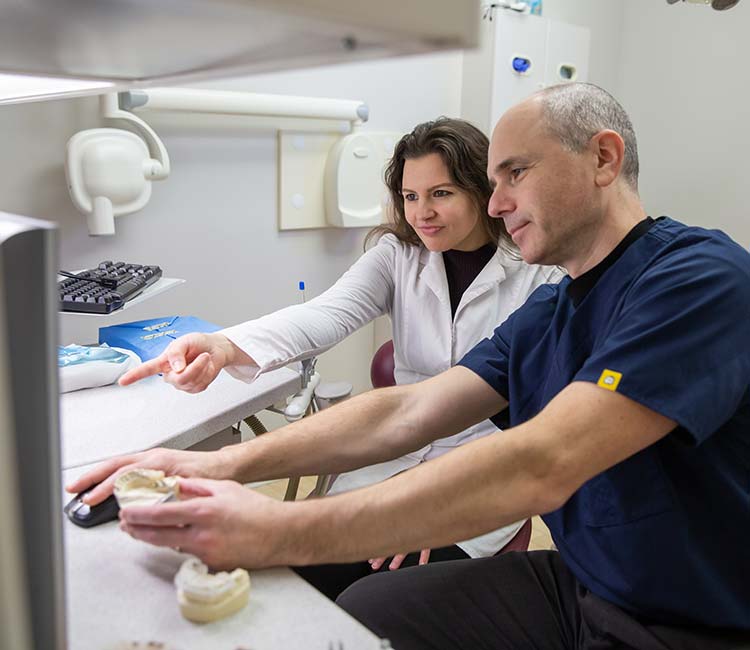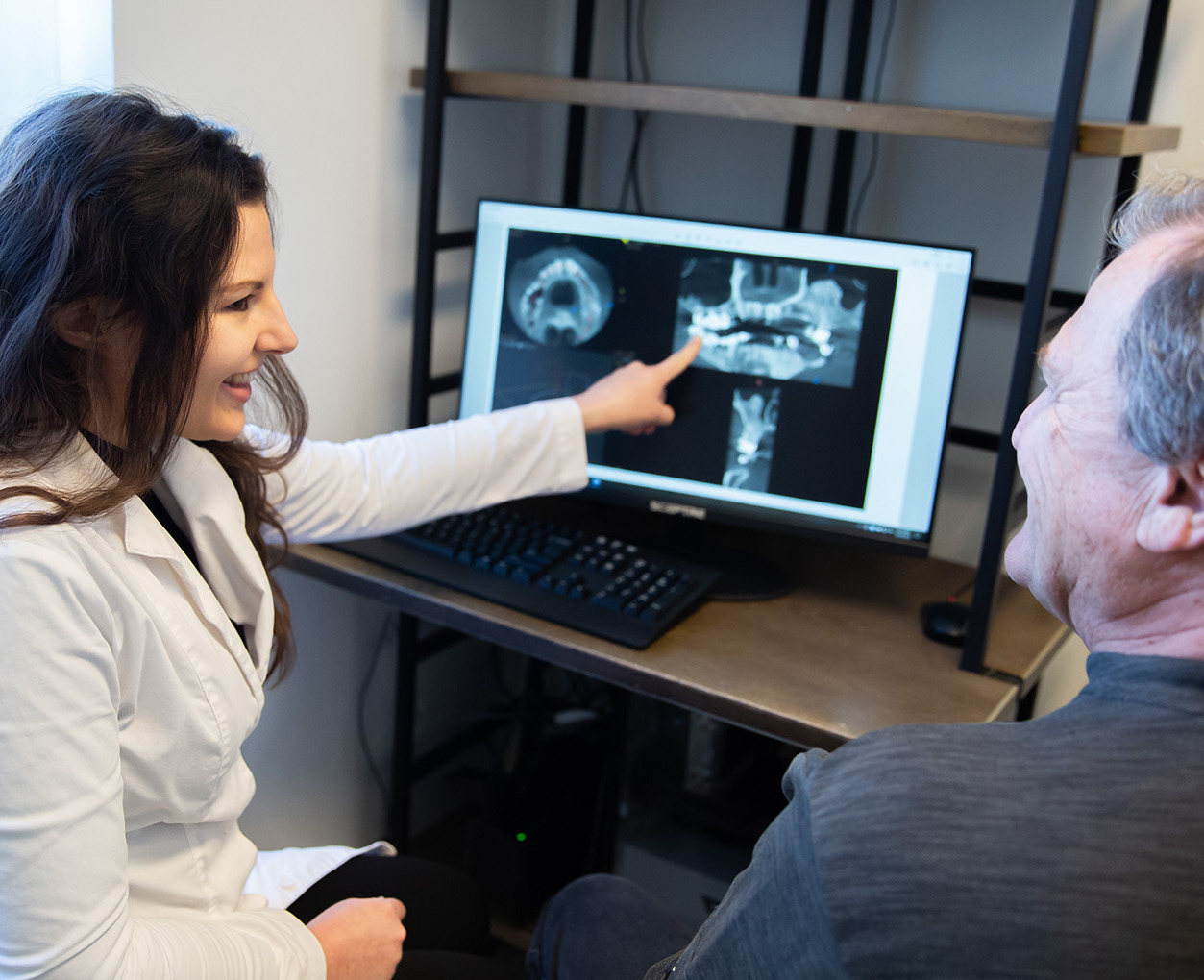



There are three components to an implant-supported bridge:
The bridge is placed using just a few implants, depending on how many teeth are missing. Step one is for the doctor to place the implants and, if possible, attach temporary teeth to be worn over the implants. If not, the doctor will screw a temporary healing cap into the top of each implant to seal off the implant’s interior from the surrounding environment. The two flaps of gum tissue will then be trimmed, shaped, and repositioned over the jawbone and around the implant’s healing cap. A few sutures will be placed to hold the gum tissue in place; the sutures will be removed in seven to ten days.
During the following two to six months, the implants and the bone will be allowed to bond together to form anchors for your new teeth. Once the healing is achieved, the bridge is created to replicate your natural teeth will be attached to the implants. The result looks just like your natural teeth and allows you to chew and speak properly.
While initially, it may seem less expensive to get a traditional denture, implant-supported bridges pay off tremendously in the long run. The dental implants provide anchored chewing support and prevent bone and gum loss, which results in a longer-lasting smile, preserved oral health, and less long-term payments for replacement and restoration procedures. Implant-supported dental bridges will not only restore your beautiful smile, but will also support your facial tissues for a more youthful look, and help prevent the remaining teeth from shifting. Finally, implant-supported bridges are also highly stable, and you can depend on them to stay in place while you eat, speak, and smile.
We care about your privacy! By submitting this assessment, you agree to the privacy policy on this website. We will contact you only with information regarding dental implants.
